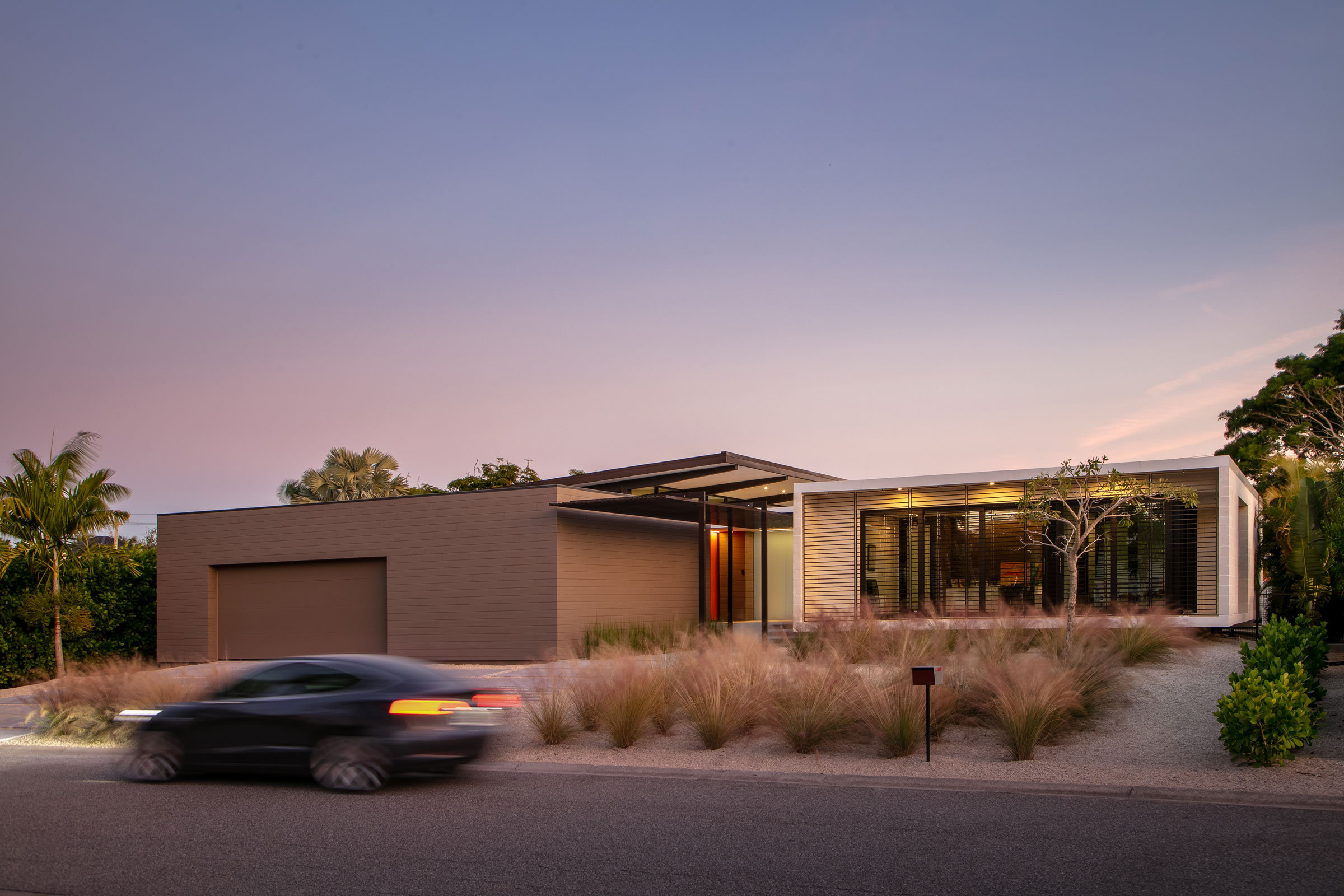Story at a glance:
- The Sarasota School of modernist architecture dates back to the early ’50s.
- LS1 House in Lido Shores, Florida is a modern example of the Sarasota School.
- Passive design is possible thanks to a clever breezeway, wooden shutters, and more.
The laid-back Lido Shores neighborhood in Sarasota, Florida is a haven for modern architecture. Back in the early ’50s, developer Philip Hiss hired local architect Paul Rudolph to create a collection of climate-sensitive homes, which also resulted in a new regional style of modernism: Sarasota School. A handful of Rudolph’s homes still exist in the area, including the very first construction in 1953—the Umbrella House.

Photo by Ryan Gamma Photography
Just a few doors down from that historic home, Hive Architects recently completed the LS1 House. The homeowners were set on a design that followed the Sarasota School principles of sharp geometry, honest expression of materials, and environmental sensitivity. Many of these modern homes look as if they’re floating above the landscape.
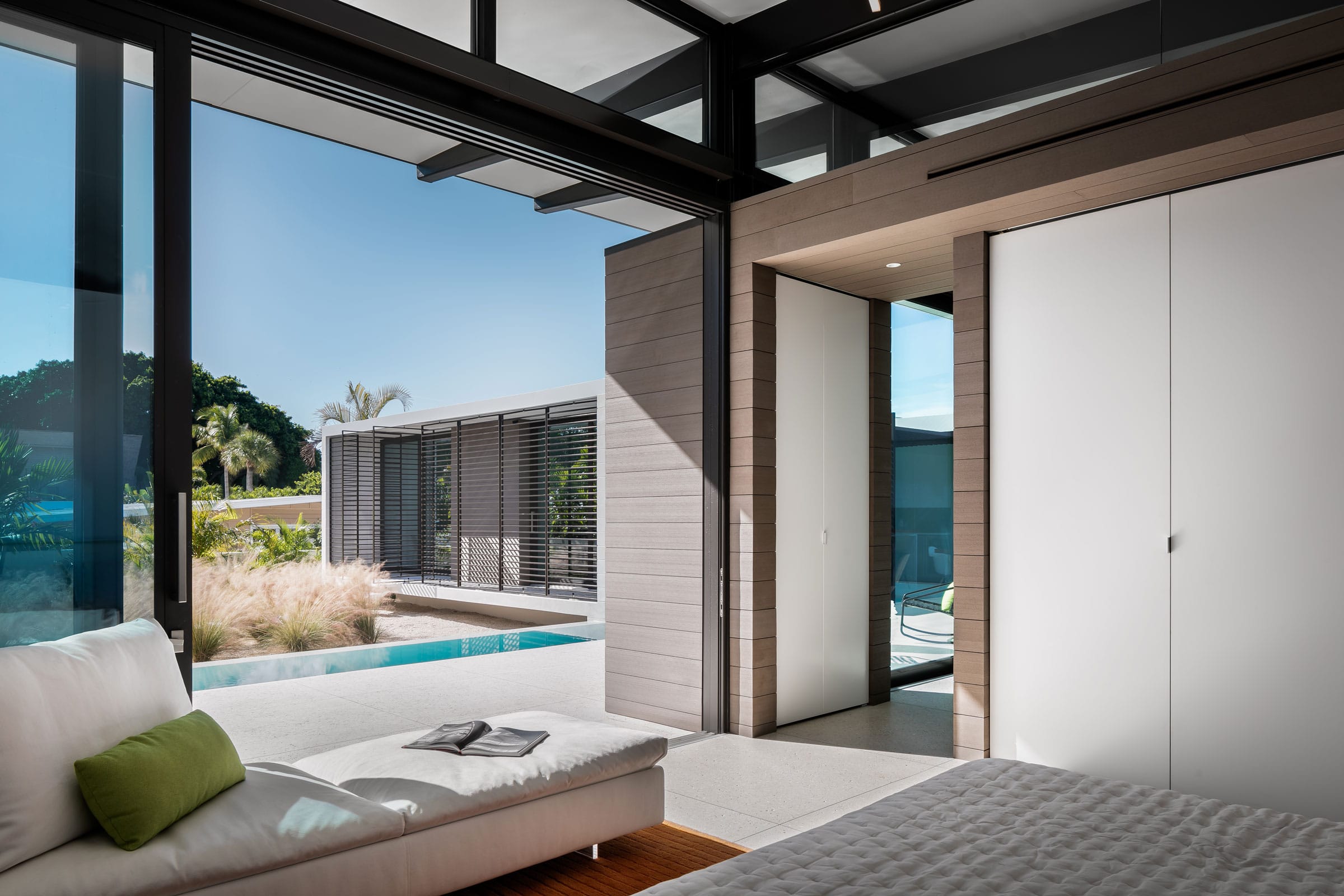
Photo by Ryan Gamma Photography
One of the client’s only requirements for the architects: Design this project as if it were your own. “They wanted us to not hold back and really get engaged with the vision. They trusted us, and in the end it was their perfect home. We have an inside joke with them: ‘If you ever sell the home, you have to give us a call first,’” says Joe Kelly, principal architect of Hive Architects.
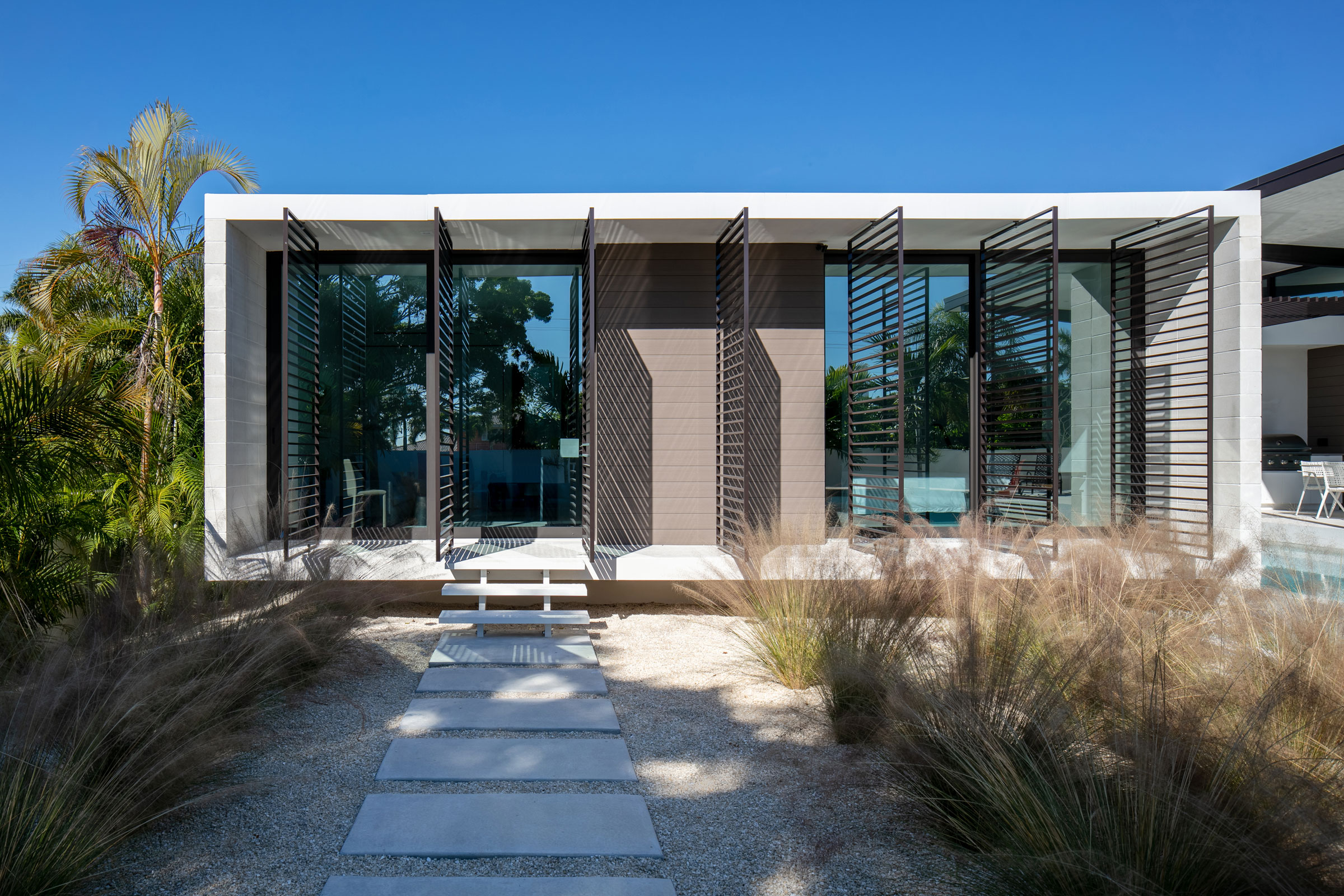
Photo by Ryan Gamma Photography
The idea behind the house was to create a series of three pavilions. The end result is an entirely open layout that is directly tied to the landscape and light. There aren’t any hallways; one space flows into the next, and a breezeway with garden views connects the main house to the guest wing. “Every space in the home is designed to pull you outside,” Kelly says. “So there’s this constant idea of bringing you outdoors that makes you feel connected to the site.”
Part of that environmental harmony comes from the project’s basis in passive house design. The large overhangs and trellises prevent intense heat in summer but still allow the sun to filter in when warmth is needed. These features are both essential and visually compelling—particularly the massive slatted wood shutters across the guest wing, which operate on a rotation. The brise-soleil over the entryway serves as a wayfinder to the back of the property and also introduces mesmerizing shadows. Plus it’s a nod to a defining characteristic of the neighborhood’s historic Umbrella House.
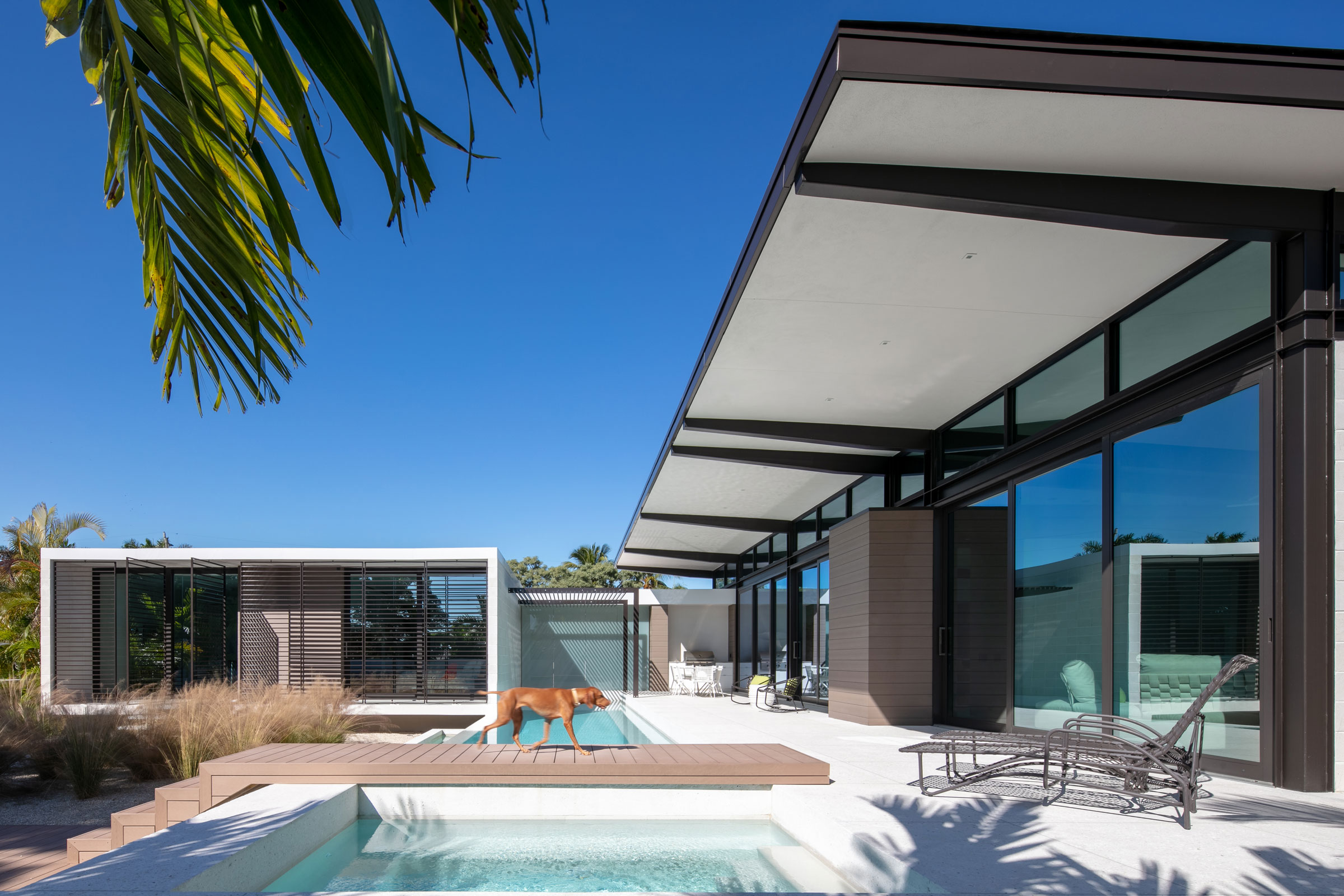
Photo by Ryan Gamma Photography
The perpetual outdoor experience is what makes LS1 House feel so generous and airy. The strong horizontal beams direct your gaze out over the pool and sun deck. Nearly every window has a view of tropical grasses and palm fronds. And, of course, there’s an abundance of natural light. “We don’t have walls that go all the way up to the ceiling, the rooms are separated by glass partitions,” says Gwen Leroy-Kelly, a principal architect at Hive Architects. “The roof almost floats from one side of the pavilion to the other and you get this feeling of being enveloped. With the moving walls there are no boundaries between inside and outside. It’s truly one space with no definition, and that’s what I like the most.”
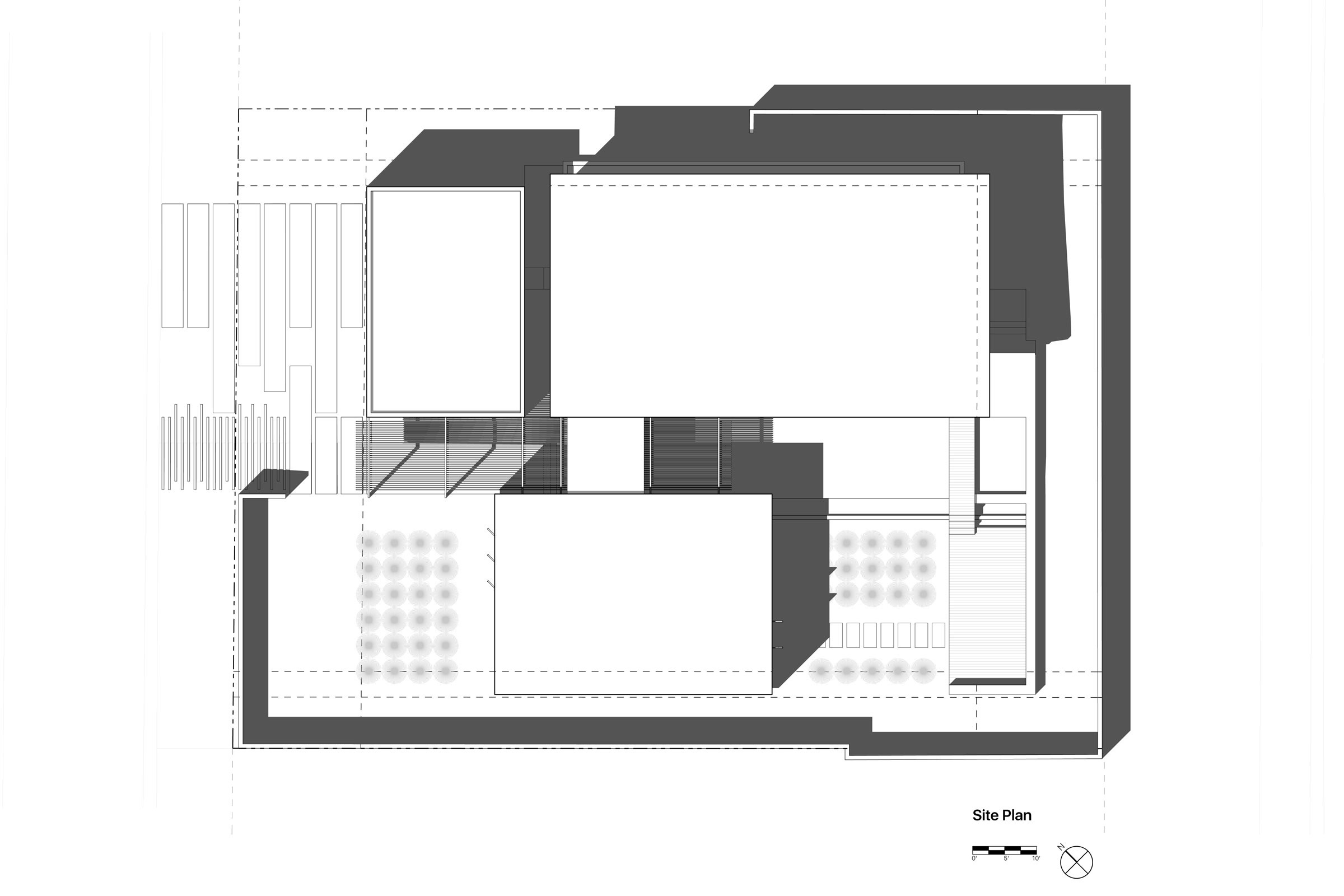
Drawing Courtesy of Hive Architects

